“Old Man Mordaith here! This week we are pleased to present a guest reviewer from our pal over at Odin Gaming – Ash George has a brilliant mind and shares my great enthusiasm for strategy games. Here are his thoughts on the new Masters of Orion game, please enjoy and check out his site which has lots of great information on strategy games and the mods made for them.” -Josh
My first introduction to Master of Orion will probably make a lot of you roll your eyes, if not straight-up recoil in horror; it was MoO3. It was also my first introduction to space 4X. Shudder you might, but here’s the thing: I really liked it. Granted, I was in my early teens and was just embarking on the 4X journey, so perhaps I wasn’t the most distinguishing of gamers, but it captured my imagination like no game before it.
(I revisited the game recently, and wasn’t quite as enamoured with it, but the Unofficial Patch mod helped.)
Back in 2003, I wasn’t quite as adept at traversing the web as I am now – or at least not as exposed – and didn’t pick up on the negativity directed at this third instalment of a legendary franchise. In fact, it wasn’t really until Master of Orion: Conquer the the Stars – which I’ve heard called NuMoo, and that’s just too darn cute to ignore – that I got the vibe at all.
For the sake of complete disclosure, I must say that I haven’t played either the original Master of Orion or Master of Orion 2, although I hear NuMoo is more faithful to the franchise than MoO3 was and is. I am, though, familiar with space 4X games in general and the wider strategy genre.
First Impressions
A lot of the early reviews for NuMoo came out mediocre; it was an “OK” game, but I got the impression it wasn’t something I’d want to invest dozens of hours in. I put it off again and again and eventually thought it was probably worth a shot when I saw it come on sale.
So I was going into this with low expectations. These expectations weren’t exactly shattered in my opening hour with the game; the tutorial was broken, the races few, even the largest galaxy seemed small, the tech tree seemed just “good enough”, and the robotic news reporters were just disastrous.
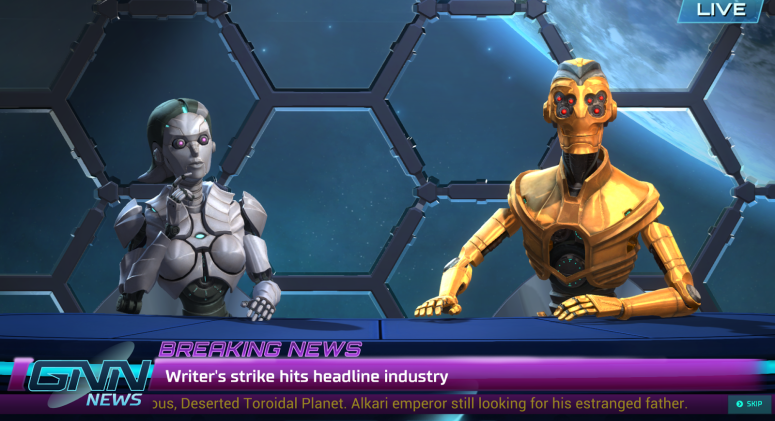
But I stuck with it, for better or for worse.
Amazonians… In Spaaace!
I tried out my first game with the Elerians, who are a matriarchal warrior society faithful to the Amazonian trope, on a large galaxy and with seven other races.
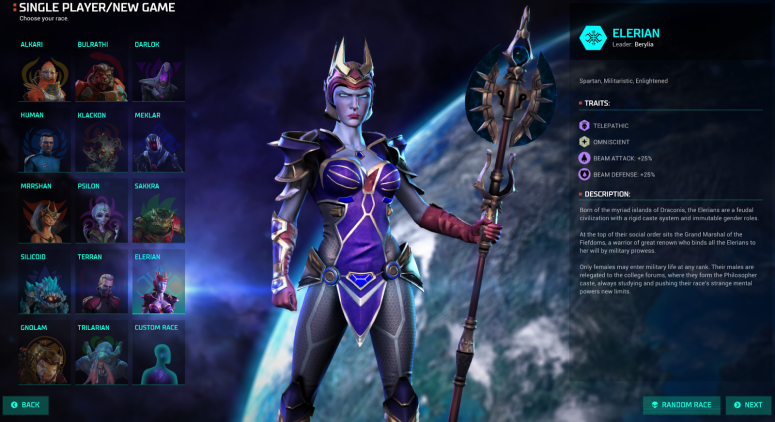
The Elerians confer offensive and defensive ship bonuses and have the incredible ability to see the entire galaxy, all the time, as well as the ability to mind control planets instead of bombard or invade them.
There was an unexpected downside to seeing the whole galaxy at once: all the other races of the galaxy were constantly asking to buy my star charts, which of course were far more valuable than they seemed to think. When you turn down a trade in NuMoo, your relationship with the trading empire deteriorates. So because I couldn’t bring myself to give away my galactic charts for the pennies I was being offered, I constantly suffered poor relations with my neighbours.
Perhaps it was just the sort of game I was playing, but the diplomacy didn’t particularly engage me. It seemed to work just fine, and I’m sure there’s some depth there, but I don’t consider it be particularly functional if I have to accept an unfair trade just to keep my neighbours sweet.
Anyway, the Elerians have pretty ships.
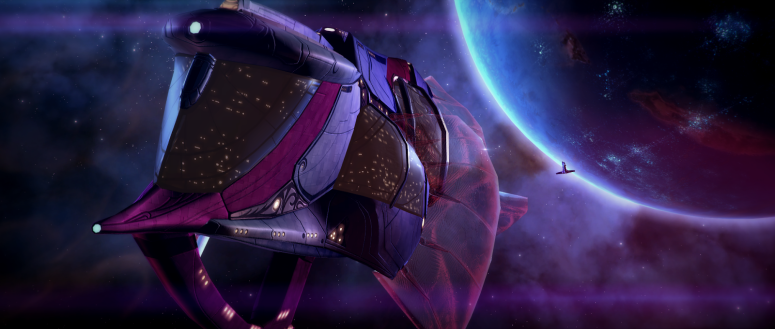
On a serious note, some of the cut-scenes and battle visuals are stunning. The interface is simple and largely intuitive (though sometimes missing obvious functionality), although the main galactic view leans a little too heavy on “simple.” I could have done with some pretty ships in this view given that this is where I spent most of my time, but everything is represented by cartoonish icons. They’re a little disappointing, but they serve their purpose.
Mountain Ranges… In Spaaace!
I was initially a little miffed at the “unstable warp points” which blocked my early expansion efforts. I was caught between a couple of these and the Mrrrshan empire who, lovely as they seemed, weren’t working out as an ally.
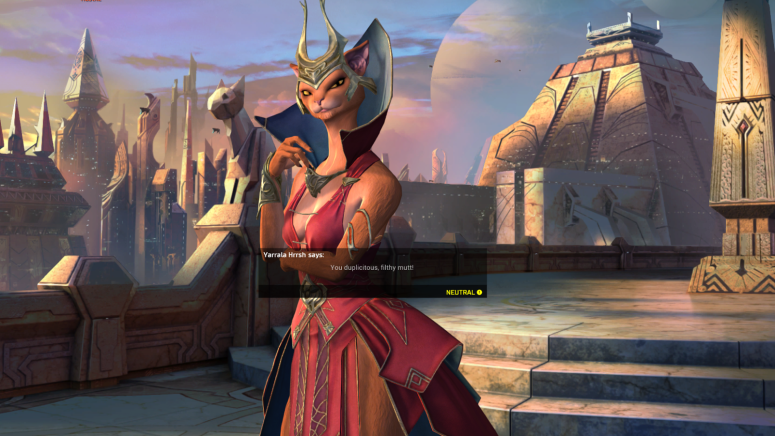
All star systems in NuMoo (and the old-Moos) are linked by warp points. You can traverse only between star systems linked in this fashion (or using jump gates later in the game). A few systems are linked with unstable warp points, which can only be used if you’ve researched a mid-game technology.
The net effect is galactic islands, cut off from the rest of the galaxy by two or three of these unstable warp points, which mirror the effects of oceans or mountain ranges in terrestrial manifestations of the genre.
Once I realised this, I came to enjoy them. Being cut off from the rest of the galaxy meant that I could focus on early expansion in my locality without being bothered by too many aggressive neighbours.
Parody
I couldn’t quite decide what the tone of the game was supposed to be. On one hand, there were often moments of awe and wonder as your colony ships landed on far-flung planets, or you had to face the existential threat that is the Antarans; on the other hand, goofy sound effects in the interface, the robotic news-casters, and the cliche insults drummed up an air of comedy.
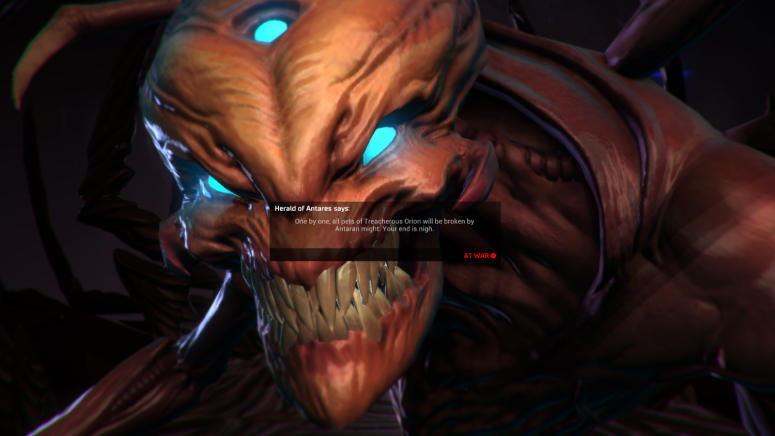
The net result is that the game became a parody of itself, poking fun at any serious attempts at building an atmosphere. I was constantly yanked away from any attempt at immersion because of it.
Research
There were two elements of the game that I really enjoyed, and research was the first. Research in NuMoo is fairly standard for a 4X game, with the player picking a technology to focus on which provides a number of bonuses, maybe including new buildings and/or new ship parts.
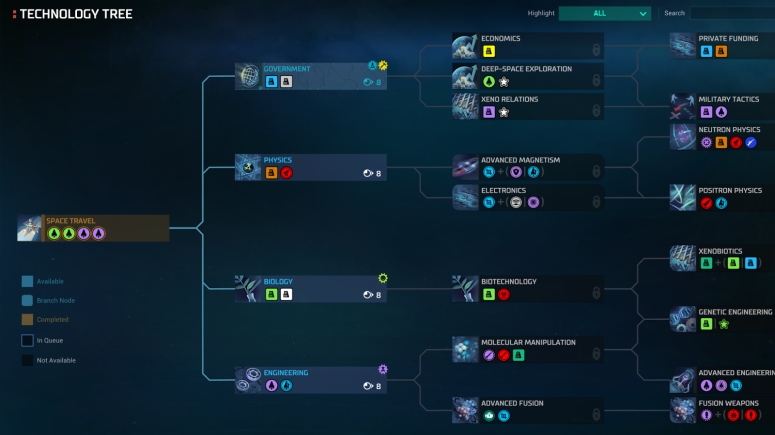
What is a bit different is that some of the technologies give you choices. You can choose, for example, a shiny new ship part, or you can choose a powerful new building. This adds even more replayability to the game and also rewards you for planning ahead a bit. It is potentially a bit punishing for those who aren’t familiar with the tree, though.
War
The other mechanism in NuMoo that caught my interest was war. It’s fairly standard for a space 4X – there are various ship hulls, which can be filled with various components to fill some role in your navy. These ships, once designed, can then be manufactured at your colonies.
You can also dip into the space battles in real time and control the fights like you would in an RTS. While this isn’t a particularly exciting mechanism these days, what I did like was being able to let the AI take the helm and just watch the ensuing light show. These fights were visually stunning.
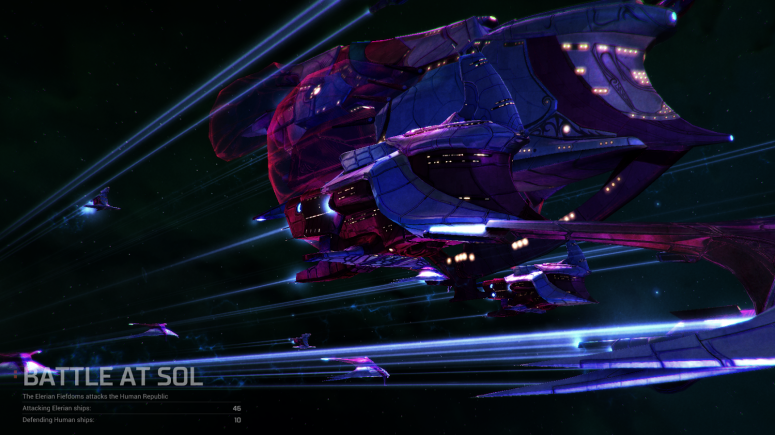
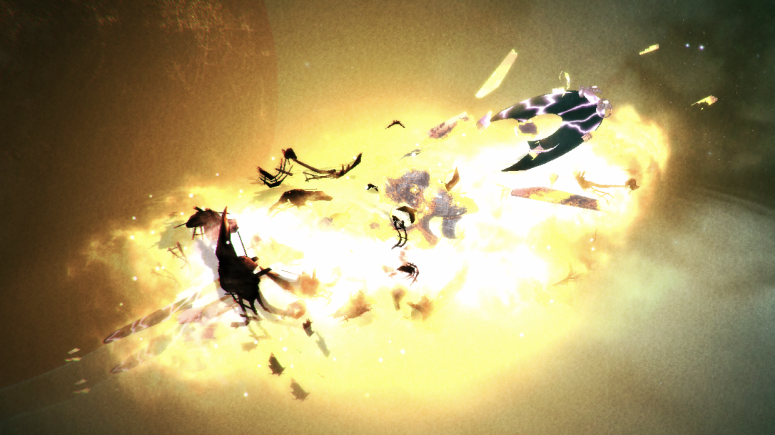
All in all, combat in NuMoo struck just the right balance between complexity and approachability. I never felt like there was too much choice to bother with a little micromanagement; just enough that if I spent a few minutes making optimisations, I might be able to take those Mrrrshan down just a little easier.
Wasted Opportunities
There were another couple of game concepts that initially seemed interesting but either turned out disappointing or unnecessary.
The first concept is pirates. There are space pirates in NuMoo, probably to curb your initial expansion and to keep your borders fortified at all times. The problem was, they were super weak. There’s probably a setting to change this, but I played on standard difficulty, and they posed no threat whatsoever. I think they managed to take out a scout once during the course of the game, but were otherwise just an annoyance rather than a genuine threat (unlike the Barbarians from Civ VI).
The second concept is pollution. I can’t quite make my mind up about this one. The basic idea is that some buildings produce pollution and some buildings reduce it. Also, the more you ratchet up production on a planet, the more pollution is generated by the population.
In the early and mid-game, it’s very easy to keep tabs on this and reverse it by building the appropriate buildings. In the late game it starts to become more of a problem, and basically acts as a trade-off; you can keep polluting your worlds, but they’ll become difficult to feed (pollution reduces planet fertility and thus crop yields), or you can reduce production to a stable level.
So while pollution acts as a counterbalance to late game imperial might and mitigates snowballing to a degree, it does so in an annoying way. Having played through a whole game, it seems like there are ways around it; perhaps I should have taken a few of those pollution-reducing tech options instead of their mutually-exclusive counterparts. None of those options appeared in the late game though, when they were actually needed. Some forethought was required. Given that this was my first playthrough, that didn’t happen.
I was annoyed by this feature, but seeing that there are answers to the problem cools me off a little. I might enjoy it more the second time.
Modding
When I’m not writing guest reviews of games, I’m writing about game mods. That’s my bag. Having played through NuMoo, I was excited to see what the community had done with the game with more than a year since its release to Early Access.
I was disappointed to see pretty mundane-looking mods; this isn’t a discredit to the modders – they’ll tinker with whatever is available to them, and I fear that the game just wasn’t made as accessible as it could have been in this regard.
Verdict
Master of Orion surprised me, but only because I came in with such low expectations. I did find myself enjoying the game once I was a few hours into it, but I suspect many others will have given up before this point.
There are two big problems that Master of Orion suffers from: there’s nothing special about it, and it has identity problems. Perhaps one could say that it’s special because it has identity problems.
Back in the day, the real-time space battles were something special. Now there are the likes of the Total War franchise, pausable-RTS, and myriad other games with a tactical layer (such as XCOM – although the tactical layer is the primary layer, it does also have a strategic layer – and Endless Legend).
With regards to the identity problems, I feel like the creators tried to import some of the humour from Galactic Civilizations, which was wildly successful. They even copied the newsroom format. But the humour is just too overstated, too slapstick, too… childish? It detracts from some of the other, more appealing (in my opinion) attempts at setting an atmosphere, such as the delightful colonisation cut-scenes and the epic space battles.
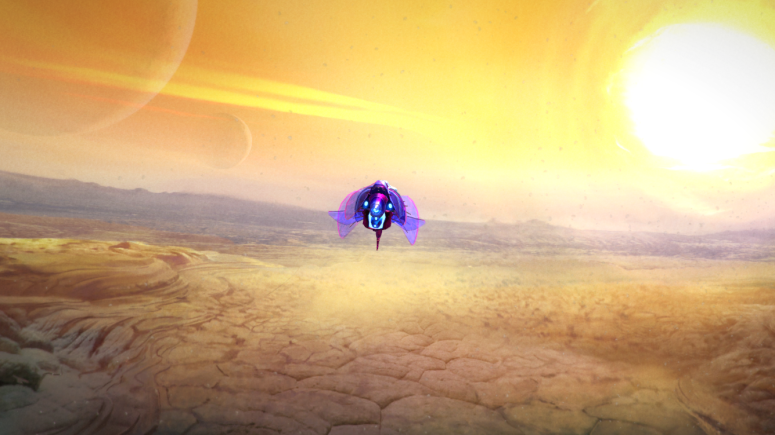
NuMoo has returned to its roots after MoO3 and does a good job of bringing the franchise to a new generation of gamers. It’s a solid recipe and I enjoyed my time with the game, but one playthrough was enough. It just feels a bit tired, like the old man of space 4X that hasn’t quite accepted the decline of his virility.
Rating 5/10 – The game is pretty and coasts on tried-and-tested 4X principles, but provides little innovation to the genre and fails to immerse the player in its universe.
Guest Reviewer – Ash George – from the fantastic site Odin Gaming


Hi admin, i must say you have very interesting content
here. Your page should go viral. You need initial
traffic only. How to get it? Search for; Mertiso’s tips go viral
LikeLike